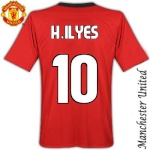[livre] Cardiovascular System - Blood
2 posters
Page 1 of 1
![[livre] Cardiovascular System - Blood Empty](https://2img.net/i/empty.gif) [livre] Cardiovascular System - Blood
[livre] Cardiovascular System - Blood
salut
Cardiovascular System: Blood
![[livre] Cardiovascular System - Blood 000ef08a_medium](https://2img.net/h/pixhost.ws/avaxhome/8a/f0/000ef08a_medium.jpeg)
Seeley Stephens - Cardiovascular System: Blood.
The McGraw−Hill Companies | 2004 | ISBN N/A | 28 pages | PDF | 2.41 MB
Many cultures around the world, both ancient and modern, share beliefs in the magical qualities of blood. Blood was considered the “essence of life” because the uncontrolled loss of it can result in death. Blood was also thought to define our character and emotions. People of a noble
bloodline were described as “blue bloods,” whereas criminals were considered to have “bad” blood. It was said that anger caused the blood to “boil,” and fear resulted in blood “curdling.” The scientific study of blood reveals characteristics as fascinating as any of these fantasies. Blood performsmany functions essential to life and often can reveal much about our health.
Blood is a type of connective tissue, consisting of cells and cell fragments surrounded by a liquid matrix. The cells and cell fragments are the formed elements, and the liquid is the plasma. The formed elements make up about 45%, and plasma makes up about 55% of the total blood volume (figure 19.1). The total blood volume in the average adult is about 4-5 L in females and 5-6 L in males. Blood makes up about 8% of the total weight of the body. Cells require constant nutrition and waste removal because they are metabolically active. The cardiovascular system, which consists of the heart, blood vessels, and blood, connects the various tissues of the body. The heart pumps blood through blood vessels, and the blood delivers nutrients and picks up waste products. This chapter explains the functions of blood (640), plasma (641), and the formed elements (642) of blood. Hemostasis (650), blood grouping (655), and diagnostic blood tests (658) are also described.
depositfiles.com
uploading.com
free mirror
bonne lecture
Cardiovascular System: Blood
![[livre] Cardiovascular System - Blood 000ef08a_medium](https://2img.net/h/pixhost.ws/avaxhome/8a/f0/000ef08a_medium.jpeg)
Seeley Stephens - Cardiovascular System: Blood.
The McGraw−Hill Companies | 2004 | ISBN N/A | 28 pages | PDF | 2.41 MB
Many cultures around the world, both ancient and modern, share beliefs in the magical qualities of blood. Blood was considered the “essence of life” because the uncontrolled loss of it can result in death. Blood was also thought to define our character and emotions. People of a noble
bloodline were described as “blue bloods,” whereas criminals were considered to have “bad” blood. It was said that anger caused the blood to “boil,” and fear resulted in blood “curdling.” The scientific study of blood reveals characteristics as fascinating as any of these fantasies. Blood performsmany functions essential to life and often can reveal much about our health.
Blood is a type of connective tissue, consisting of cells and cell fragments surrounded by a liquid matrix. The cells and cell fragments are the formed elements, and the liquid is the plasma. The formed elements make up about 45%, and plasma makes up about 55% of the total blood volume (figure 19.1). The total blood volume in the average adult is about 4-5 L in females and 5-6 L in males. Blood makes up about 8% of the total weight of the body. Cells require constant nutrition and waste removal because they are metabolically active. The cardiovascular system, which consists of the heart, blood vessels, and blood, connects the various tissues of the body. The heart pumps blood through blood vessels, and the blood delivers nutrients and picks up waste products. This chapter explains the functions of blood (640), plasma (641), and the formed elements (642) of blood. Hemostasis (650), blood grouping (655), and diagnostic blood tests (658) are also described.
depositfiles.com
uploading.com
free mirror
bonne lecture

sara- Rester sympas ;je suis un nouveau membre
-


Messages : 9
Points : 26
Date d'inscription : 2009-08-18
Réputation : 0
Localisation : alger
Niveau d'avertissement :

ilyeshh- Membre spéciale

-


Filière : Médecine
Niveau : Interne
Messages : 1410
Points : 2171
Date d'inscription : 2009-07-02
Réputation : 3
Age : 38
Localisation : constantine
Niveau d'avertissement :
 Similar topics
Similar topics» Cardiovascular physiology 2012
» Blood Cells : A Practical Guide - 2015
» Textbook of Cardiovascular Intervention-Springer 2014
» Handbook Of Pediatric Cardiovascular Drugs-Springer 2014
» The Gastrointestinal System-Springer 2014
» Blood Cells : A Practical Guide - 2015
» Textbook of Cardiovascular Intervention-Springer 2014
» Handbook Of Pediatric Cardiovascular Drugs-Springer 2014
» The Gastrointestinal System-Springer 2014
Page 1 of 1
Permissions in this forum:
You cannot reply to topics in this forum




